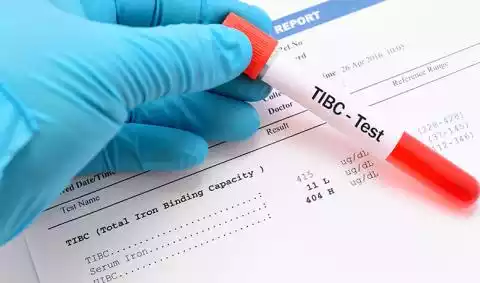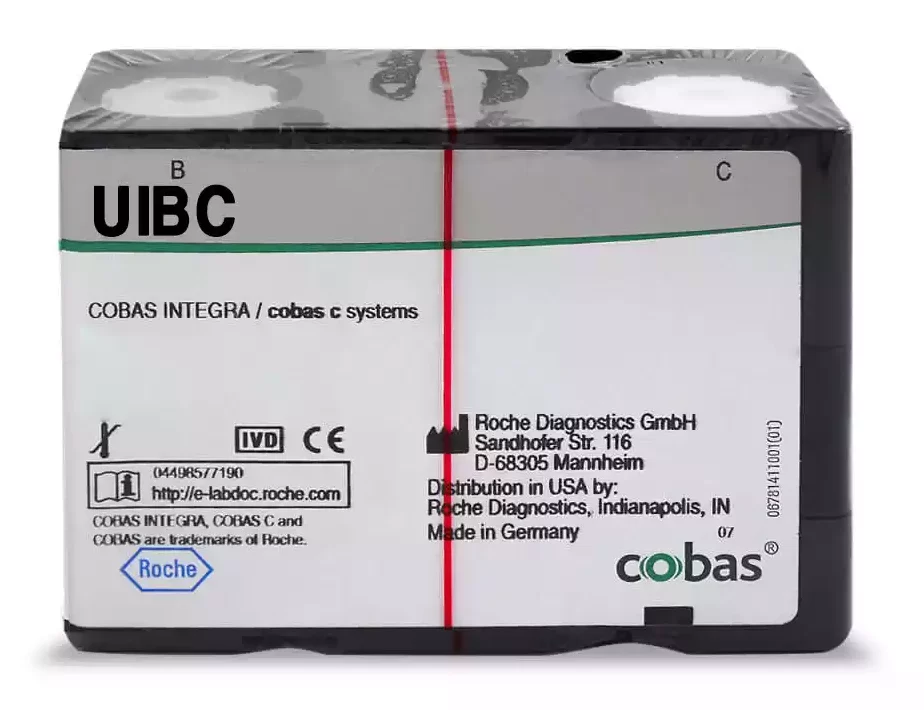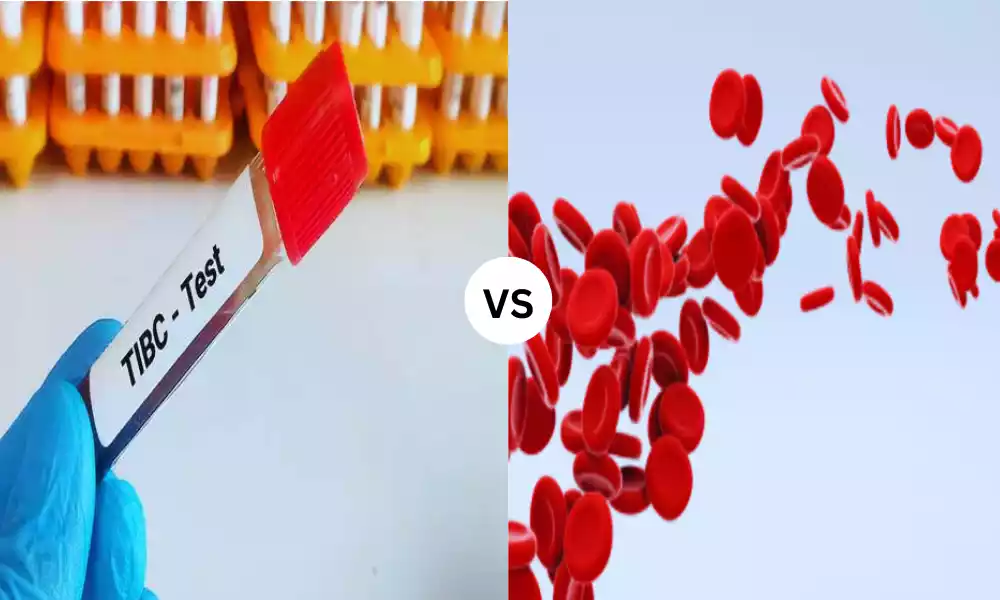TIBC and UIBC are fundamental measurements that provide crucial insights into the body’s iron metabolism. TIBC represents the maximum amount of iron that can bind to transferrin, a vital protein for iron transport, while UIBC reveals the portion of TIBC that is not currently binding iron. These measurements play a pivotal role in diagnosing and managing iron-related disorders, contributing to overall health and well-being.
Definition of TIBC

Total Iron-Binding Capacity (TIBC) refers to the maximum amount of iron that can be bound to transferrin, a key protein responsible for transporting iron within the bloodstream. TIBC serves as an essential indicator of the body’s capacity to transport and bind iron effectively. By assessing TIBC levels, healthcare professionals can gain insights into the potential presence of iron-related disorders and imbalances.
Definition of UIBC

Unbound Iron-Binding Capacity (UIBC) is a significant measure that represents the portion of Total Iron-Binding Capacity (TIBC) not currently binding to iron. In other words, UIBC reflects the amount of transferrin available in the bloodstream to carry and transport iron. This measurement is valuable for assessing iron availability and potential imbalances within the body’s iron metabolism. UIBC values are often used in conjunction with other iron-related markers to diagnose conditions and guide appropriate treatments.
Clinical Significance of TIBC and UIBC

TIBC (Total Iron-Binding Capacity) and UIBC (Unsaturated Iron-Binding Capacity) have clinical significance primarily in diagnosing and monitoring iron-related disorders:
- High TIBC/UIBC: Indicates iron deficiency anemia.
- Low TIBC/UIBC: Suggests iron overload or chronic disease.
- Helps distinguish anemias and assess response to iron therapy.
- Used in conjunction with other tests for a comprehensive iron status evaluation.
- Useful in investigating unexplained anemia or iron-related disorders.
Diagnostic Applications
TIBC (Total Iron-Binding Capacity) and UIBC (Unsaturated Iron-Binding Capacity) have various diagnostic applications in clinical practice, primarily related to assessing a patient’s iron status and diagnosing iron-related disorders. Here are some diagnostic applications:
- Diagnosing Iron Deficiency Anemia:
- Elevated TIBC and UIBC levels are characteristic of iron deficiency anemia, where the body increases its iron-binding capacity to capture more iron due to a deficiency.
- Differentiating Anemia Types:
- TIBC and UIBC can help differentiate iron deficiency anemia from other types of anemia, as they tend to have distinct profiles.
- Monitoring Iron Therapy:
- These tests are used to monitor the effectiveness of iron therapy in patients with iron deficiency anemia. As iron stores are replenished, TIBC and UIBC levels should decrease.
- Detecting Iron Overload Disorders:
- Abnormally low TIBC and UIBC levels may be observed in conditions of iron overload, such as hereditary hemochromatosis.
- Comprehensive Iron Status Assessment:
- TIBC and UIBC are often used alongside other iron-related tests (serum iron, ferritin) to provide a comprehensive assessment of a patient’s iron status.
- Investigating Unexplained Anemia:
- In cases of unexplained anemia or iron-related disorders, abnormal TIBC and UIBC levels can guide healthcare providers toward further investigations and diagnostic tests.
- Assessing Response to Treatment:
- TIBC and UIBC measurements are valuable in assessing how a patient’s iron status responds to treatment or dietary interventions.
- Identifying Iron Metabolism Disorders:
- These tests can help diagnose underlying iron metabolism disorders, such as sideroblastic anemia or anemia of chronic disease.
- Preoperative Screening:
- TIBC and UIBC may be used as part of preoperative screening to assess a patient’s iron status before surgery, ensuring optimal preparation.
- Evaluation of Chronic Diseases:
- Elevated TIBC and UIBC can be observed in chronic inflammatory diseases, where the body’s iron utilization is affected.
TIBC and UIBC play a crucial role in diagnosing and monitoring iron-related disorders, helping healthcare providers make informed decisions about patient care and treatment. They are valuable components of a comprehensive iron status evaluation.
Comparison table of TIBC and UIBC
Here’s a comparison table of TIBC and UIBC:
| Aspect | Total Iron-Binding Capacity (TIBC) | Unbound Iron-Binding Capacity (UIBC) |
|---|---|---|
| Definition | Maximum iron bound to transferrin | Portion of TIBC not currently binding iron |
| Measurement | Blood test to assess transferrin capacity | Calculated by subtracting serum iron from TIBC |
| Indicator of | Body’s iron transport capacity | Available transferrin for iron transport |
| Relationship with Iron Disorders | Higher TIBC often seen in anemia | Higher UIBC may suggest lower iron availability or higher demand for iron |
| Diagnostic Use | Assesses iron-related disorders like iron-deficiency anemia and hemochromatosis | Provides insights into iron availability and potential imbalances |
| Clinical Significance | Helps diagnose iron imbalances and guide appropriate treatments | Valuable marker for assessing iron availability and potential disorders |
This table highlights the key differences and roles of Total Iron-Binding Capacity (TIBC) and Unbound Iron-Binding Capacity (UIBC) in assessing iron metabolism and related health conditions.
Relationship between TIBC and UIBC
- TIBC (Total Iron-Binding Capacity) is the total iron-carrying capacity of transferrin.
- UIBC (Unsaturated Iron-Binding Capacity) is the unbound iron-binding capacity within TIBC.
- TIBC = UIBC + Serum Iron, representing the total capacity of transferrin.
- High UIBC indicates unused transferrin capacity, often seen in iron deficiency anemia.
- TIBC and UIBC together provide insights into transferrin’s iron-binding capability and help diagnose iron-related conditions.
When and Why are TIBC and UIBC Ordered?
TIBC (Total Iron-Binding Capacity) and UIBC (Unsaturated Iron-Binding Capacity) are ordered:
When:
- Suspected iron deficiency anemia.
- Differentiating anemia types.
- Monitoring iron therapy.
- Suspected iron overload.
- Routine screening or preoperative assessment.
- Investigating unexplained anemia or iron-related disorders.
- Monitoring chronic inflammatory diseases.
Why:
- To confirm iron deficiency anemia.
- Assess response to iron therapy.
- Differentiate anemia types.
- Detect iron overload conditions.
- Identify underlying causes of anemia.
- Screen for iron-related issues.
- Monitor iron utilization in chronic diseases.
Summary
Understanding Total Iron-Binding Capacity (TIBC) and Unbound Iron-Binding Capacity (UIBC) is integral to comprehending iron metabolism and its impact on overall health. TIBC reflects the maximum iron that can bind to transferrin, while UIBC signifies the available transferrin capacity for iron transport. These measurements provide essential insights into iron-related disorders, guiding diagnosis and tailored treatments. Together, TIBC and UIBC play a pivotal role in maintaining optimal iron balance and ensuring the proper functioning of the body.



